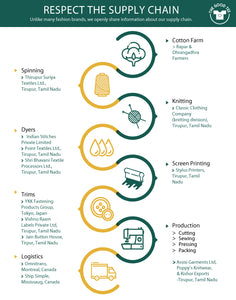What Can We Learn From The Indigenous People About Sustainability?

Indigenous peoples play a crucial role in safeguarding global biodiversity, protecting approximately 80% of the planet's biodiversity.
In today's world, where environmental conservation is of utmost importance, Indigenous peoples have valuable knowledge and practices that can guide us. Despite constituting only 5% of the global population, Indigenous communities are responsible for safeguarding 80% of the world's biodiversity. Their deep connection with nature and spiritual reverence for the environment provide valuable lessons for all of humanity. Let's explore some of the insights we can gain from Indigenous cultures when it comes to preserving our planet.
Who are indigenous population?

Around the world, Indigenous communities are distinguished by ways of life always oriented toward conservationism and maintaining a genuine balance with their environments. It’s clear to these communities that the fate of humanity is linked to the fates of other species.
The profound regard Indigenous peoples hold for their territories has been instrumental in their survival and the preservation of their cultural heritage, despite the passage of time and changing surroundings. Their resilience carries significant implications. The welfare of all individuals hinges upon the continued existence of the ecosystems protected by Indigenous groups. Looking ahead, the value of their practices will only grow more crucial in shaping a sustainable future.
Three Life Lessons for Sustainable Living from Indigenous People
1. Conservation as a Way of Life:

Indigenous communities have long prioritized conservation as an integral part of their way of life. Their sustainable practices focus on maintaining a harmonious balance with nature rather than exploiting or modifying it. By using techniques that adapt to the environment and allowing resources to regenerate, they minimize their impact on the ecosystem. Indigenous peoples understand that the well-being of humanity is interconnected with the survival of all species.
One example of Indigenous Indian communities practicing sustainable resource management is the Dongria Kondh people of Odisha. They reside in the Niyamgiri Hills, where they have nurtured a deep connection with the land for generations. The Dongria Kondh practice sustainable agriculture, rotational farming, and strict regulations on resource use to maintain soil fertility and biodiversity. Their traditional governance system ensures community-led management of natural resources, preserving their cultural heritage and promoting environmental sustainability. The Dongria Kondh exemplify how indigenous communities' knowledge and practices contribute to sustainable development.
At The Good Tee, we deeply respect indigenous art and ways of life. We apply the same principles when sourcing cotton for our t-shirts. We prioritize ethical practices that align with indigenous wisdom, ensuring that the cotton we use is obtained sustainably. By incorporating these values into our brand, we aim to honor Indigenous communities and contribute to a more sustainable and inclusive future.
2. Sacred Connection:

For indigenous peoples, the environment is intertwined with the divine. They consider plants, animals, mountains, rivers, and other elements as sacred. By elevating these living beings to a religious level, conservation itself becomes a spiritual practice. This reverence for their territories has allowed indigenous communities to preserve their beliefs, traditions, and languages over time, making their resilience invaluable to the well-being of all people.
A notable example of this connection would be The Maasai tribe in East Africa, actively contributing to the world through their sustainable practices and conservation efforts. With a deep spiritual connection to the land and wildlife, the Maasai have embraced a way of life that balances their cultural heritage with environmental preservation. They have established wildlife conservancies, practicing sustainable pastoralism and rotational grazing techniques to protect biodiversity and maintain the health of rangelands. Additionally, the Maasai have embraced community-based tourism, sharing their rich culture and traditions with visitors while promoting conservation awareness. Through their sustainable practices, the Maasai tribe sets an inspiring example of how indigenous communities can play a vital role in preserving the environment and promoting global sustainability.
3. Bio-Cultural Heritage:

Indigenous communities possess extensive knowledge of their natural surroundings, making their cultural heritage bio-cultural in nature. They have deep understanding of the ecological, dietary, and medicinal functions of living elements and beings. This holistic knowledge is crucial for maintaining biodiversity and sustainable ecosystems. Through generations of observation and experimentation, Indigenous communities have developed sophisticated systems of traditional medicine that rely on the use of locally available flora. Many modern pharmaceuticals have been derived from or inspired by these traditional remedies.
Did you know? The active ingredient in pain relievers, such as Aspirin, was known to First Nations for centuries. It is found in species of the willow tree, including the pussy willow.
In addition to medicine, Indigenous tribes have also contributed to the dietary world. Their diets are typically rich in plant-based foods, including a wide range of fruits, vegetables, and herbs. Research has shown that Indigenous diets are highly nutritious and associated with lower rates of chronic diseases such as obesity, diabetes, and heart disease. Moreover, Indigenous food systems often employ sustainable and environmentally friendly practices, such as organic farming and harvesting techniques that prioritize the health of ecosystems.
Indigenous peoples have much to teach us about environmental conservation. By learning from their wisdom, we can develop a deeper connection with nature and contribute to the preservation of our planet's biodiversity. Supporting Indigenous communities through conscious consumer choices and respecting their knowledge and practices is a powerful way to honor their invaluable role as guardians of our shared environment. Let us embrace their teachings and work together to create a sustainable and harmonious future for all.
At The Good Tee, we recognize the importance of incorporating Indigenous wisdom into our brand values and practices. By aligning with the principles of conservation, cultural respect, ethical sourcing, and education, we aim to create eco-friendly clothing that supports a positive impact on the planet and its people. Through our brand, we seek to celebrate cultural diversity, promote fair trade, and raise awareness about Indigenous knowledge and sustainable practices.
For more information, please visit www.thegoodtee.com






Leave a comment